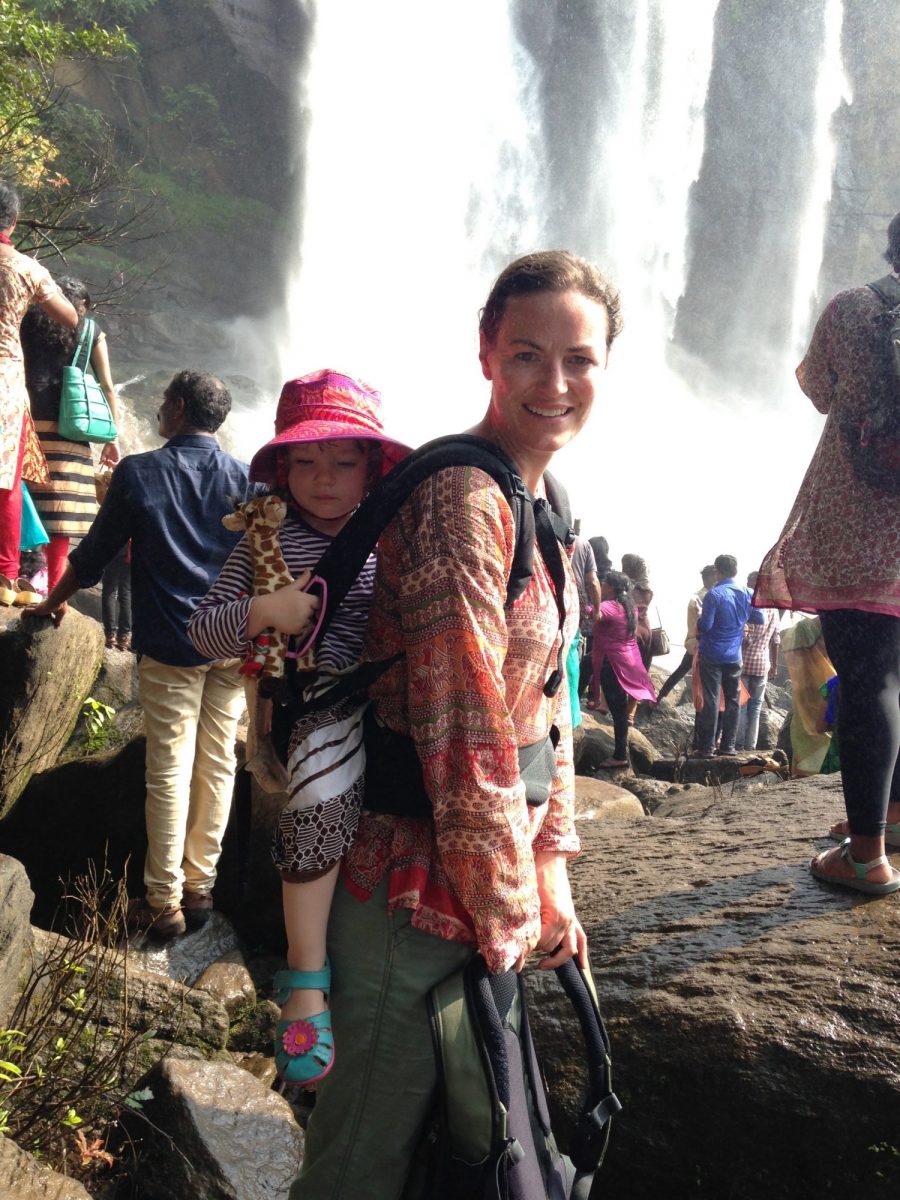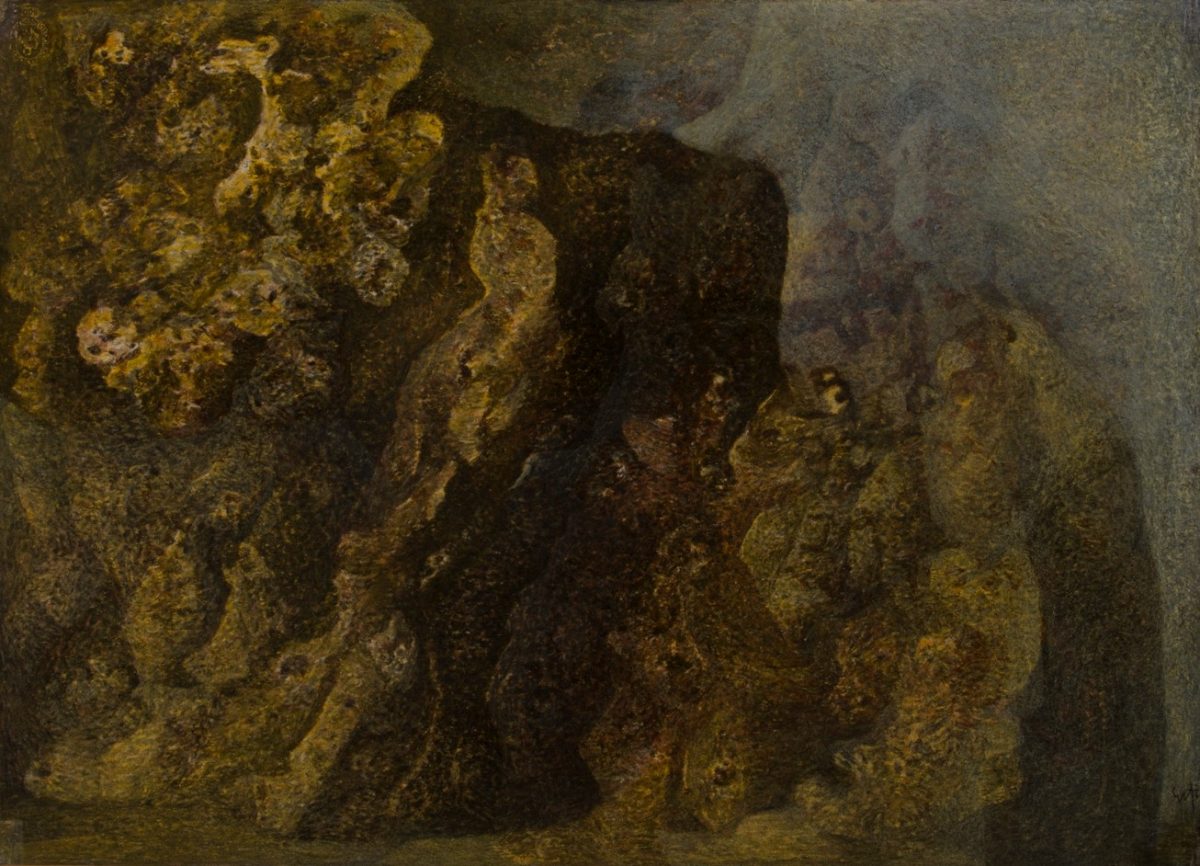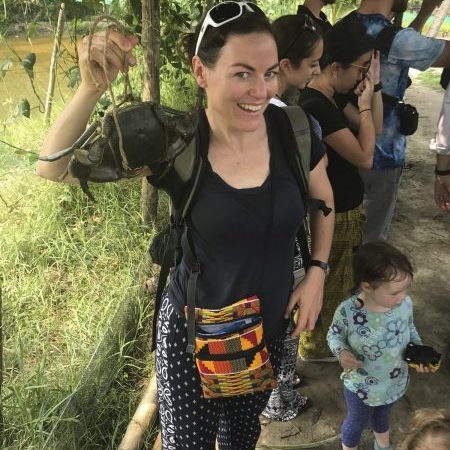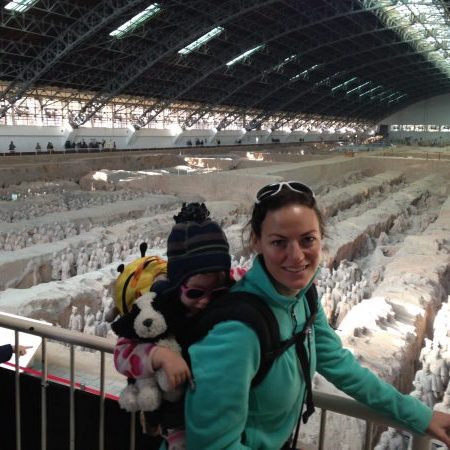Eleanor Moseman is a traveler. When she was in high school, she spent a year studying in Switzerland. After college, her career goal was to lead people on educational tours around the world. Since then she has lived for extended periods of time in Germany, Czech Republic, Austria, and Turkey. “I like to challenge myself and expand my perceptions and personal boundaries, which helps me continue growing,” she says. “It’s hard to grow if you’re in the same place all the time. You need to feel unsettled and out of your element in order to make gains toward that future self.”
And her most recent effort at expanding her perceptions and challenging herself was by teaching on the Fall 2017 voyage with Semester at Sea. She taught two sections of the core curriculum class Intro to Visual Art and one section of Women in Art History, tailoring the content to the countries the voyage journeyed to. In Intro to Visual Art: “We looked at how things are framed up in ancient times and how contemporary art responds to that. We would focus as a case study on one aspect of historical art and look at how contemporary art/architecture responds to that moment. And what we were learning about was tied to the places we were going.” In Women in Art History: “We would look regionally at how women’s cultural production is or is not supported by conditions within a given society and across time.” Lessons in both classes were connected to places on the voyage: Germany, Spain, Ghana, South Africa, India, Myanmar, Việt Nam, China, Japan, and Hawai’i.

As an associate professor of art history specializing in modern European art (1850-present), Moseman is especially interested in the conditions of the art world as it pertains to women as cultural producers and how women practice art within patriarchy. “Art speaks to what’s important, what’s changing, and where the tension is in society,” she says.
Moseman’s recent research is about Ellida Schargo von Alten, a German artist active in the years after WWII. Von Alten’s career encompassed multiple media: fashion design, fiction writing, pastel painting, and drawing. Von Alten was very connected to water in her personal life. To begin, she was named after the ship her grandfather captained in the 19th century, and she felt drawn to the sea and waterways throughout her youth and into adulthood. From the mid-1930s, she wrote children’s literature and surrealist short stories that often dealt with water, and her letters and memoirs talk about feeling connected to water. She approached her pastel drawings through “organic abstraction,” a process-based method whereby intuition guides each successive mark on the page, resulting in forms that often look like eddies and waterfalls.

From a passage in Moseman’s paper that she presented at an art-and-poetry symposium at Illinois State University in Normal, IL (Nov 2016):
Von Alten's 1967 pastel Zwilicht (Twilight) is a key example of her process-based automatism that functions for the viewer as a shifting landscape that refuses a stable reading. The main forms are comprised of a skein of yellow, orange, and brown marks that build upon each other and coalesce as a craggy form rising from a shallow foreground toward the upper right corner. There, a veil of blue, lavender, yellow, and green marks read as a gray fog bank. But as soon as the eye settles on a rocky landscape engulfed in fog, the eye-like forms demand attention and transform the main feature into an encrustation of hybrid animals, from frogs to pachyderms to mollusks. Then the gray corner asserts itself as shallow water along a shelf of corrals and we are suddenly underwater, waiting for a fish swimming towards the reef to reveal itself. As her title Twilight suggests, we are faced with a threshold, whether temporal, spatial, or conceptual: the abstract forms insist on malleability, much the same way as forms in the real world shift at dawn and dusk when we can’t quite rely on our eyes to tell us what we see. In those moments the unconscious slips in and narrates where vision fails. This is precisely what von Alten strives for: an activation of the unconscious through indeterminate visual form.
Moseman’s interest in von Alten’s art, von Alten’s interest in water, and Moseman’s love of travelling, coalesced during the Semester at Sea voyage to bring about a new realization for Moseman.
“The persistent impression [of the Semester at Sea experience] that has remained with me is that we are really all connected by water,” says Moseman. “When I signed up, I was thinking of land masses and how ideas are connected by land. I’m a Europeanist so I think of rail and land passages, but halfway through the voyage it dawned on me that information and cultural norms are shared across waterways. I hadn’t absorbed that before.”
Indeed, the experience of floating up to a city – whether it was Barcelona, Spain; Kobe, Japan; Shanghai, China; or Cape Town, South Africa – caused Moseman to think about how waterways give access to ideas and cultural notions. “Rather than immersing myself in a culture, as I have been used to doing, Semester at Sea provided access to a global comparative perspective which gives me the possibility to see how things are slightly or largely different and see continuities across countries,” she says.


The port experiences on the voyage, which lasted two to six days at a time, offered a chance to extend the classroom learning. For example, while in Japan, Moseman’s teaching of art and architecture in relation to Shintō tradition was amplified by a hike to a forest shrine above the city of Kobe; the rustic shrine honored the kami (nature deity) that inhabits a waterfall cascading into a crystal clear pool that was surrounded by maple trees in full autumn colors. Water is associated with its qualities of life giving and purification, according to Shintō belief and the forest setting underscored those meanings. By comparison Moseman’s students participated in a studio visit in Ghana where they learned that the Ga people of greater Accra understand water not only as life giving but also as the conduit to the afterlife. Ga abebuu adekai (“fantasy coffins”), which are built by master craftsmen in the shape of objects connected to the deceased’s profession or personal interests, originally took the form of a canoe that would transport the soul across the river from the world of the living to be reunited with one’s ancestors.
Moseman quickly came to value the unique characteristics of life at sea, especially the 360˚ view of the ocean, as well as the different spaces on the ship. “Each of the common spaces offered a different type of setting to meet with students and prep for class. Barriers were broken down because of the shared experience and community,” she says.
And that sense of community carries on after the voyage itself. As an assistant curator with CSU’s Gregory Allicar Museum of Art, Moseman has curated an exhibition called “Crossing Boundaries: Reflections on Semester at Sea.” All CSU faculty and staff who have participated in Semester at Sea were invited to select an item from the museum’s permanent collection and identify how that work relates to their subject matter and speaks to their experience of global comparative education afforded by Semester at Sea. “Mathematicians and physicists, professors of languages and English – people from diverse fields are choosing works of art and writing a short statement about how that relates to some concept in connection to their teaching,” she says.
“Art isn’t just for artists – it’s for everybody,” she says. “It’s a matter of inviting people in. Having faculty and staff participate in this collaborative experience encourages people to share it with their colleagues and students.”
The exhibit will be on display Oct. 5 – Dec. 14, 2018.
Moseman’s article, “Navigating Partnership: German Surrealist Ellida Schargo von Alten, Richard Oelze, and Cross-Fertilization in the Visual Arts” will be published in Feminist German Studies this December.
